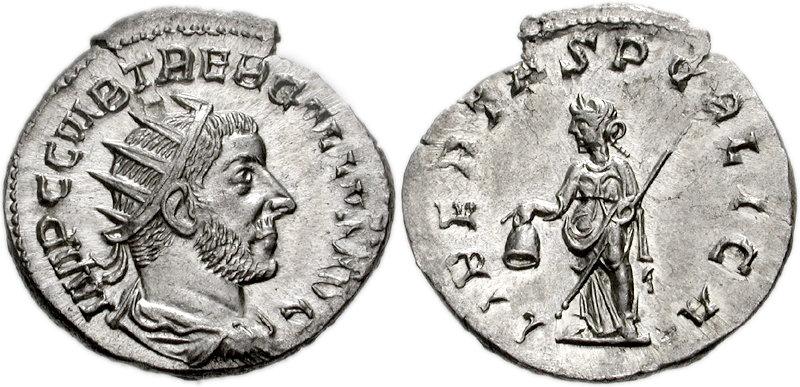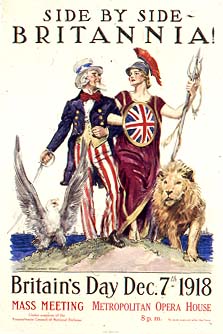|
National Symbols Of France
National symbols of France are emblems of the French Republic and French people, and they are the cornerstone of the nation's republican tradition. The national symbols of the French Fifth Republic are: * The French flag * The national anthem: "La Marseillaise" * The national personification: Marianne * The national motto: ''Liberté, égalité, fraternité'' (Liberty, equality, fraternity) * The national day: Bastille Day (celebrated on 14 July) * The Gallic rooster * The lictor's fasces emblem * The Great Seal of France Other French symbols include: * The cockade of France * The letters "RF", standing for ''République Française'' (French Republic) * The National Order of the Legion of Honour and the National Order of Merit * The Phrygian cap * Joan of Arc *Fleur-de-lis Flag The French flag is a tricolour that consists of three vertical stripes of equal width, coloured in royal blue, white, and red. It is the only official French emblem, according to article 2 of the ... [...More Info...] [...Related Items...] OR: [Wikipedia] [Google] [Baidu] |
Logo RF
A logo (abbreviation of logotype; ) is a graphic mark, emblem, or symbol used to aid and promote public identification and recognition. It may be of an abstract or figurative design or include the text of the name it represents as in a wordmark. In the days of hot metal typesetting, a logotype was one word cast as a single piece of type (e.g. "The" in ATF Garamond), as opposed to a ligature, which is two or more letters joined, but not forming a word. By extension, the term was also used for a uniquely set and arranged typeface or colophon. At the level of mass communication and in common usage, a company's logo is today often synonymous with its trademark or brand.Wheeler, Alina. ''Designing Brand Identity'' © 2006 John Wiley & Sons, Inc. (page 4) Etymology Douglas Harper's Online Etymology Dictionary states that the term 'logo' used in 1937 "probably a shortening of logogram". History Numerous inventions and techniques have contributed to the contemporary logo, includ ... [...More Info...] [...Related Items...] OR: [Wikipedia] [Google] [Baidu] |
Fleur-de-lis
The fleur-de-lis, also spelled fleur-de-lys (plural ''fleurs-de-lis'' or ''fleurs-de-lys''), is a lily (in French, and mean 'flower' and 'lily' respectively) that is used as a decorative design or symbol. The fleur-de-lis has been used in the heraldry of numerous European nations, but is particularly associated with France, notably during its monarchical period. The fleur-de-lis became "at one and the same time, religious, political, dynastic, artistic, emblematic, and symbolic," especially in French heraldry. The fleur-de-lis has been used by French royalty and throughout history to represent saints of France. In particular, the Virgin Mary and Saint Joseph are often depicted with a lily. The fleur-de-lis is represented in Unicode at in the Miscellaneous Symbols block. Origin The ''fleur de lis'' is widely thought to be a stylized version of the species ''Iris pseudacorus'', or ''Iris florentina''.Stefan Buczacki However, the lily (genus lilium, family Liliaceae) and the ... [...More Info...] [...Related Items...] OR: [Wikipedia] [Google] [Baidu] |
Ministry Of Europe And Foreign Affairs
The Ministry for Europe and Foreign Affairs () is the ministry of the Government of France that handles France's foreign relations. Since 1855, its headquarters have been located at 37 Quai d'Orsay, close to the National Assembly. The term Quai d'Orsay is often used as a metonym for the ministry. Its cabinet minister, the Minister of Europe and Foreign Affairs (french: Ministre de l'Europe et des Affaires étrangères) is responsible for the foreign relations of France. The current officeholder, Catherine Colonna, was appointed in 2022. In 1547, royal secretaries became specialised, writing correspondence to foreign governments and negotiating peace treaties. The four French secretaries of state where foreign relations were divided by region, in 1589, became centralised with one becoming first secretary responsible for international relations. The Ancien Régime position of Secretary of State for Foreign Affairs became Foreign Minister around 1723; Charles Hélion Marie le Ge ... [...More Info...] [...Related Items...] OR: [Wikipedia] [Google] [Baidu] |
Fasces
Fasces ( ; ; a ''plurale tantum'', from the Latin word ''fascis'', meaning "bundle"; it, fascio littorio) is a bound bundle of wooden rods, sometimes including an axe (occasionally two axes) with its blade emerging. The fasces is an Italian symbol that had its origin in the Etruscan civilization and was passed on to ancient Rome, where it symbolized a magistrate's power and jurisdiction. The axe originally associated with the symbol, the Labrys (Greek: , ') the double- bitted axe, originally from Crete, is one of the oldest symbols of Greek civilization. To the Romans, it was known as a ''bipennis''. The image has survived in the modern world as a representation of magisterial or collective power, law, and governance. The fasces frequently occurs as a charge in heraldry: it is present on the reverse of the U.S. Mercury dime coin and behind the podium in the United States House of Representatives; and it was the origin of the name of the National Fascist Party in Italy (from which ... [...More Info...] [...Related Items...] OR: [Wikipedia] [Google] [Baidu] |
Lictor
A lictor (possibly from la, ligare, "to bind") was a Roman civil servant who was an attendant and bodyguard to a magistrate who held ''imperium''. Lictors are documented since the Roman Kingdom, and may have originated with the Etruscans. Origin The lictors were instituted by Rome's first king, Romulus, who appointed twelve lictors to attend him. Livy refers to two competing traditions for the reason that Romulus chose that number of lictors. The first version is that twelve was the number of birds that appeared in the augury, which had portended the kingdom to Romulus. The second version, favoured by Livy, is that the number of lictors was borrowed from the Etruscan kings, who had one lictor appointed from each of their twelve states. Eligibility Originally, lictors were chosen from the plebeians, but through most of Roman history, they seemed to have been freedmen. Centurions from the legions were also automatically eligible to become lictors on retirement from the army. T ... [...More Info...] [...Related Items...] OR: [Wikipedia] [Google] [Baidu] |
Juno (mythology)
Juno ( ; Latin ) was an ancient Roman goddess, the protector and special counsellor of the state. She was equated to Hera, queen of the gods in Greek mythology. A daughter of Saturn, she was the sister and wife of Jupiter and the mother of Mars, Vulcan, Bellona and Juventas. Like Hera, her sacred animal was the peacock.''Larousse Desk Reference Encyclopedia'', The Book People, Haydock, 1995, p. 215. Her Etruscan counterpart was Uni, and she was said to also watch over the women of Rome. As the patron goddess of Rome and the Roman Empire, Juno was called ("Queen") and was a member of the Capitoline Triad (''Juno Capitolina''), centered on the Capitoline Hill in Rome, and also including Jupiter, and Minerva, goddess of wisdom. Juno's own warlike aspect among the Romans is apparent in her attire. She was often shown armed and wearing a goatskin cloak. The traditional depiction of this warlike aspect was assimilated from the Greek goddess Athena, who bore a goatskin, or a goatsk ... [...More Info...] [...Related Items...] OR: [Wikipedia] [Google] [Baidu] |
Rooster
The chicken (''Gallus gallus domesticus'') is a domesticated junglefowl species, with attributes of wild species such as the grey and the Ceylon junglefowl that are originally from Southeastern Asia. Rooster or cock is a term for an adult male bird, and a younger male may be called a cockerel. A male that has been castrated is a capon. An adult female bird is called a hen and a sexually immature female is called a pullet. Humans now keep chickens primarily as a source of food (consuming both their meat and eggs) and as pets. Traditionally they were also bred for cockfighting, which is still practiced in some places. Chickens are one of the most common and widespread domestic animals, with a total population of 23.7 billion , up from more than 19 billion in 2011. There are more chickens in the world than any other bird. There are numerous cultural references to chickens – in myth, folklore and religion, and in language and literature. Genetic studies have pointed to mult ... [...More Info...] [...Related Items...] OR: [Wikipedia] [Google] [Baidu] |
Liberty (goddess)
The concept of liberty has frequently been represented by personifications, often loosely shown as a female classical goddess. Examples include Marianne, the national personification of the French Republic and its values of '' Liberté, Égalité, Fraternité'', the female Liberty portrayed on United States coins for well over a century, and many others. These descend from images on ancient Roman coins of the Roman goddess Libertas and from various developments from the Renaissance onwards. The Dutch Maiden was among the first, re-introducing the cap of liberty on a liberty pole featured in many types of image, though not using the Phrygian cap style that became conventional. The 1886 Statue of Liberty (''Liberty Enlightening the World'') by Frédéric Auguste Bartholdi is a well-known example in art, a gift from France to the United States. Ancient Rome The ancient Roman goddess Libertas was honored during the second Punic War (218 to 201 BC) by a temple erected on the Ave ... [...More Info...] [...Related Items...] OR: [Wikipedia] [Google] [Baidu] |
National Personification
A national personification is an anthropomorphic personification of a state or the people(s) it inhabits. It may appear in political cartoons and propaganda. Some early personifications in the Western world tended to be national manifestations of the majestic wisdom and war goddess Minerva/Athena, and often took the Latin name of the ancient Roman province. Examples of this type include Britannia, Germania, Hibernia, Hispania, Helvetia and Polonia. Examples of personifications of the Goddess of Liberty include Marianne, the Statue of Liberty (''Liberty Enlightening the World''), and many examples of United States coinage. Another ancient model was Roma, a female deity who personified the city of Rome and more broadly, the Roman state, and who was revived in the 20th Century as the personification of Mussolini's "New Roman Empire". Examples of representations of the everyman or citizenry in addition to the nation itself are Deutscher Michel, John Bull and Uncle Sam.Eric Hobsbawm ... [...More Info...] [...Related Items...] OR: [Wikipedia] [Google] [Baidu] |
Rouget De Lisle
Claude Joseph Rouget de Lisle (), sometimes spelled de l'Isle or de Lile (10 May 1760 – 26 June 1836), was a French army officer of the French Revolutionary Wars. He is known for writing the words and music of the ''Chant de guerre pour l'armée du Rhin'' in 1792, which would later be known as ''La Marseillaise'' and become the French national anthem. Early life Rouget de Lisle was born at Lons-le-Saunier, reputedly on a market day. His parents lived in the neighbouring village of Montaigu. A plaque was placed at the precise spot of his birth and a statue erected in the town's center in 1882. He was the eldest son of Claude Ignace Rouget (5 April 1735 – 6 August 1792) at Orgelet and Jeanne Madeleine Gaillande (2 July 1734 – 20 March 1811). In 1784, he was initiated into "Les Frères discrets", a masonic lodge in Charleville, just after being promoted officer. Career He enlisted into the army as an engineer and attained the rank of captain. A royalist like his father, he ... [...More Info...] [...Related Items...] OR: [Wikipedia] [Google] [Baidu] |
_Brutus%2C_denarius%2C_54_BC%2C_RRC_433-1.jpg)





